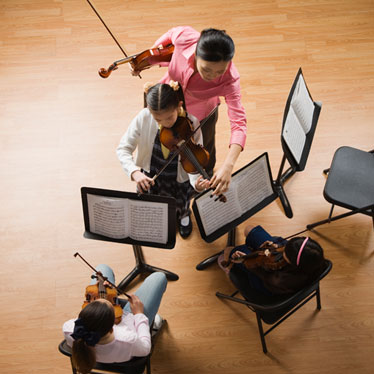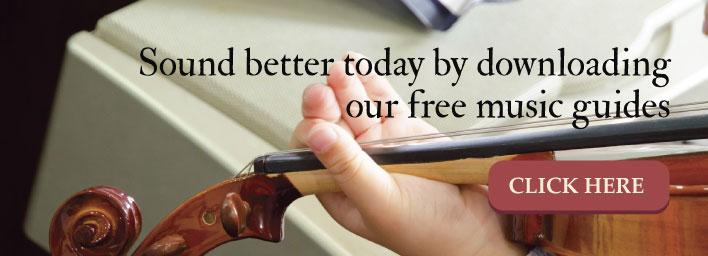Secrets for Bringing Out the Best in Your Music Students

Forming personal connections is the Number One, best thing you can do as a music educator to bring out the best in your students. When students feel connected and seen by their teachers and mentors, they automatically invest more in their work.
So, with that formative idea in mind, let’s explore some of the ways you can get to know students better and build a more collaborative spirit within the class or group, which is the second best thing you can do to keep your students inspired to be their best.
Learn more about their lives outside the music classroom or orchestra
Have you ever encountered a history or science teacher who was blown away by one of your orchestra or band members because, “Student X doesn’t do anything in my class, but it was amazing to see them play like that. I didn’t know they had it in them.” Sometimes, we see students at their worst when we teach a subject they don’t like, and it requires getting to know them outside the subject in order to view them as more well-rounded individuals.
Spend class or practice time at the beginning of each year, or after a break, letting the bows take a rest as you spend time learning more about each of your students. Have them fill out index cards, answering questions – some normal, some whacky – so you get to know things you wouldn’t have learned otherwise. For example:
- My favorite food is…
- If I could travel anywhere in the world I would go to…
- My dream job is…
- If I didn’t play the X, I’d play the X or the X…
- If I could be any animal, I would be a…
- Besides lunch and break, my favorite subject in school is…
- My current favorite song is…
Then, spend some time reading these index cards at lunch or after work. You’ll be amazed what you learn and how it affects your perception of each of your students.
Create a sense of collaboration
The more students are invested in the group, the more they’ll step up to the group’s expectations. There are plenty of ways you can do this.
Do more ensemble practice work
Often, instrumentalists only hear their part. Practicing in ensembles allows them closer access to the blend. When practicing and playing in an ensemble, students don’t feel so on-the-spot and they get to hear how amazing their part sounds in a group (very helpful for cellists and basses who often play supporting roles to the violins). Alternating between letting students choose their groups, and assigning groups based on ability, makes for more well-rounded bonding.
Let them play their own music
There are so many free music resources online, many of which offer free or very affordable arrangements of contemporary songs. Use these in class (along with other fun, digital learning tools) and let students choose some of their favorites. Getting to play songs they enjoy makes students more willing to play the pieces you select for them.
Allow time for both improvisation and composition
When students master improvisation, they automatically cultivate better musicianship via a more innate sense of note and harmonic relationships. Do spend time allowing students to build their improvisation skills. A bonus tip is that this also helps to quiet pre-concert anxiety because they have more confidence in how to “fake it ‘til they make it” back with the group.
You may be surprised how adept some of your students are at improve and composition, which lends itself to teaching them more about composing and arranging.
Take them to see current, relevant Greats in concert
If you’re having a difficult time getting students fired up about Bach and Haydn, it might be time to keep your ear to the ground about some of the most relevant, string musician Greats, known for their hip takes on classical string instruments.
Examples of these include:
- 2 Cellos
- Black Violin
- Amadéus Leopold (a.k.a. Hahn Binh)
- Charnett Moffett (bassist)
- Lindsey Stirling (violin)
- Damien Escobar (violin)
Each of these string musicians are deeply rooted in classical techniques but also bring their own special flavor to their work. Seeing that relationship in person inspires students to work harder on the “boring technical/theory stuff,” giving them the ability to develop their “special flavor” over time.
Developing deep connections with and throughout your student group, allowing them to shine in their own special ways, and giving them the opportunity to see string instruments in all their various expressions, helps to bring out the best in your music students.
Sponsored by Thomastik-Infeld


